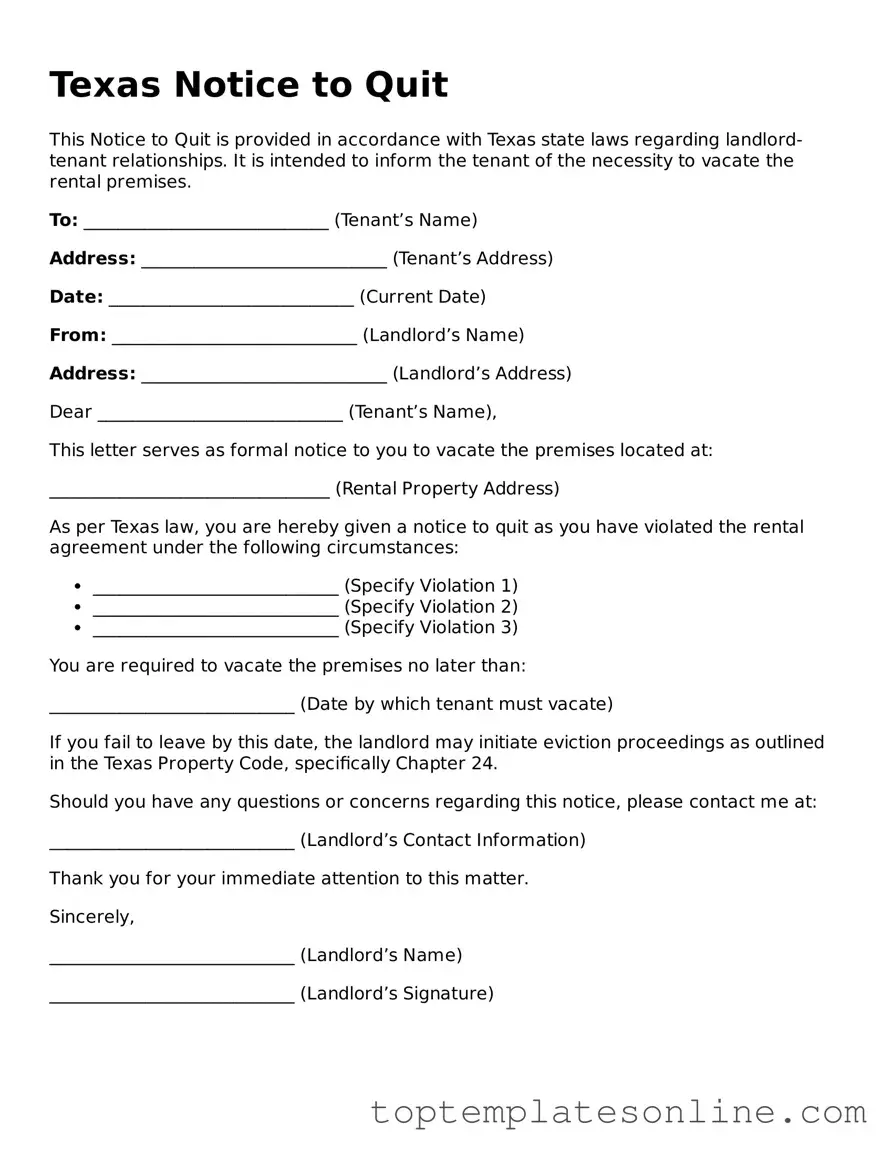Blank Notice to Quit Template for Texas State
The Texas Notice to Quit form is a legal document used by landlords to formally request that tenants vacate a rental property. This notice serves as a crucial step in the eviction process, providing tenants with information about their lease violations or the end of their rental agreement. Understanding the nuances of this form is essential for both landlords and tenants to navigate their rights and responsibilities effectively.
Customize Notice to Quit Here
